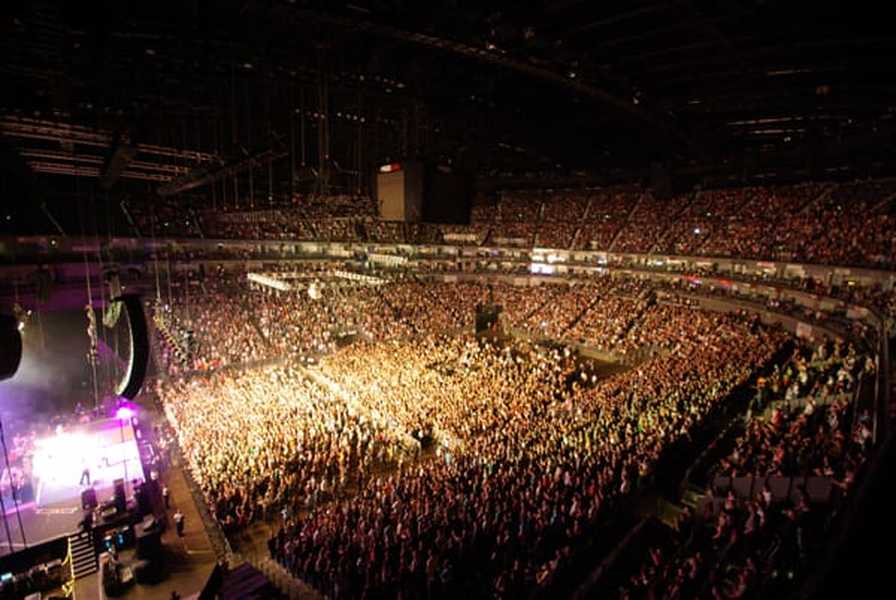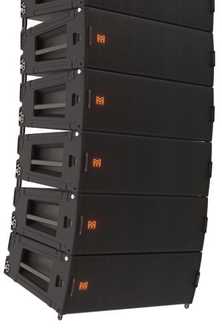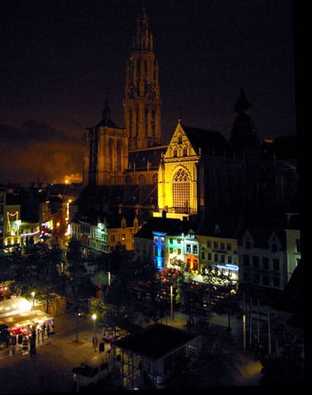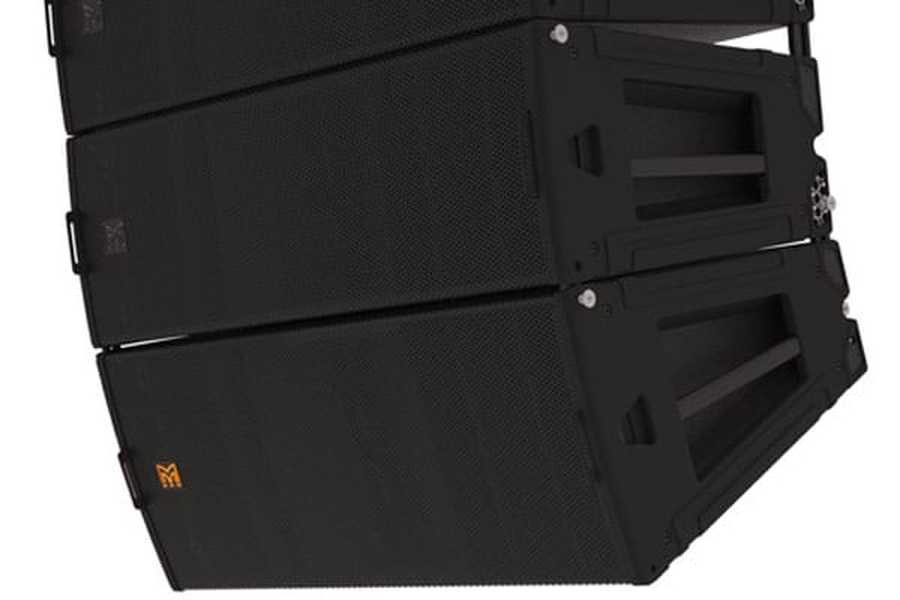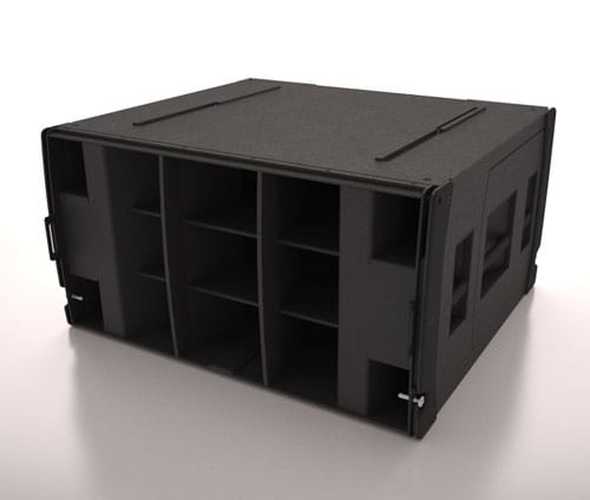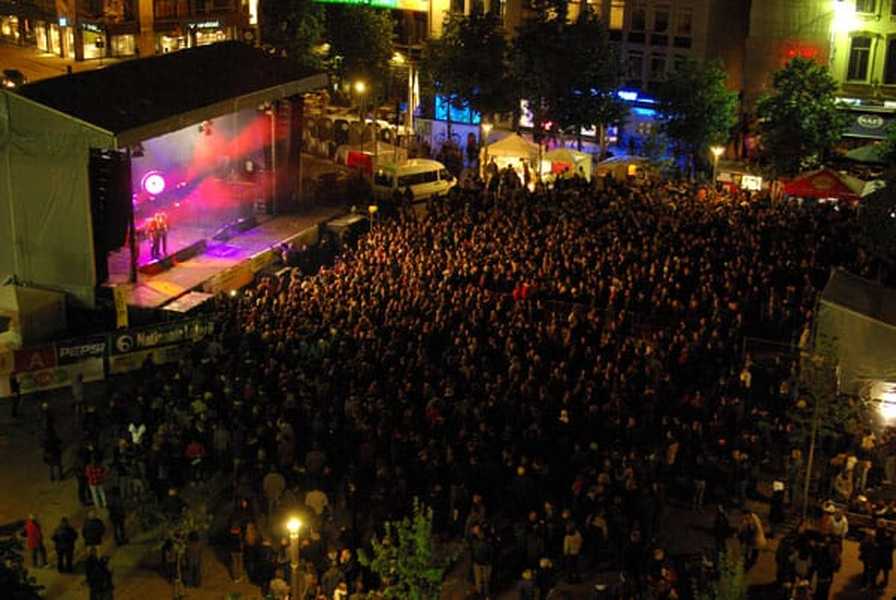MARTIN AUDIO'S MULTI-CELLULAR SENSATION BLASTS OFF
When German hip hop band Fettes Brot stepped out at Pier 2 in Bremen on April 29th to begin their German tour, they may have been unaware that they were about to embark on a historic journey into a new generation of audio. This momentous occasion was certainly not lost on their long-serving FOH engineer Oliver Voges, however, who sensed that the new PA system he was piloting was destined to set a new benchmark in sound reinforcement.
By the time the press arrived - in Dresden eight days later - their sense of astonishment was palpable. 'It was like the time when the first line array came out,' said Voges. 'But this system reinvents line array - we have established a new standard, and one that's stable.'
In actual fact, Martin Audio's technological breakthrough with the Multicellular Loudspeaker Array (MLA) had been unceremoniously 'trialled' a few months earlier in London with the band Enter Shikari - but this was its first true road test.
The experience left Olli Voges reflecting contentedly on his meeting with Complete Audio's owner André Rauhut, on the stand of Martin Audio distributors, Atlantic Audio, at this year's Frankfurt Pro Light+Sound Show - which resulted in him giving the system its full world premier.
The two men had first worked together on the Deftones' tour back in 1997 and this was their first meeting in a long time. 'André knew I had the Fettes Brot tour and we were thinking about using the Martin W8LC system,' recalls Olli. 'But the venue sizes were ranging from 2,000 seats up to 9,000 seat arenas and we wanted something that could really adapt well. That's when he said there was a chance that we might be able to use this new system …'.
Since the MLA system is scalable (up to stadium level) it was the perfect solution. However, as he was already committed to the Echo Awards, Olli Voges was denied an advanced listening - and took the system purely on Rauhut's recommendation.
The Complete Audio MD also recommended that Martyn 'Ferrit' Rowe, Martin Audio's North American-based Technical Training Manager take on the duties of system tech, to ensure that the system was fully optimised.
Martin Audio's use of horn-loaded principles is legendary, but the next stage in their evolution was to provide a more radically efficient method than having each part of the system - low, mid and high - driven by the same signal.
The MLA was designed to minimise the variations in frequency response, sound pressure levels and set-up times from venue to venue - and operate over distances of up to 150 metres. 'We wanted all our shows to be as consistent as possible, night after night, and be able to offer a more accurate predictive analysis of each room by removing the guesswork,' said Martin Audio's R&D Director, Jason Baird. 'Based on the consistent results we experienced right from 'switch on' during the system's recent German tour, we are even more convinced that MLA is a game-changing product.'
Trial-and-error array design has been replaced with intelligent numerical optimization of the array's output based on a highly accurate acoustic model. With the multi-cellular approach, each cell can be individually addressed by its own DSP (and Class D amplification); thus with six cells in each enclosure a 24-box system provides 144 uniquely tuned elements. 'The beauty is that all the complexity of the DSP is under the hood, so it doesn't impact on the user,' notes Baird.
How did this translate to an audience? And why does this now render conventional line array technology, in the words of Olli Voges, 'old school'?
Largely because numerical optimization of the drive signal to each of the array's cells, will deliver audio to every seat in the house, to an unprecedented level of consistency.
Said Olli, 'We took one measurement from the front row to the rear of the balcony - a distance of some 36 metres - and the difference was little over 1dB, which is nothing. The subs sounded equally impressive, even way up on the balcony and right at the back of the room.'
The tributes soon came pouring in. As the viral word-of-mouth effect started to leak out among the cognoscenti so a number of sound engineers rocked up to the shows. 'Many said that the Martin Audio line array was one of only two rock and roll systems they would consider - but when they heard the MLA they were astonished,' said the sound engineer.
'I remember Olli himself hearing it for the first time,' recalls Ferrit, 'walking towards the stage and saying 'It's not got any louder.' And I said 'Exactly, that's the idea!''
But probably the best set of audio ears belonged to Fettes Brot's record producer, André Luth, who had just delivered the double live album which had taken the band high into the charts. He referred to the 'liquidity' of the vocals, and the fact that he was hearing detail in the mix that he had only ever heard previously in the studio. 'He was at every show and was really freaking out about the sound,' said Voges.
'Everything we had talked about at the predictive stage we could now hear with our own ears - including where it would taper off right off before the end of the back wall. It was just so precise.'
But for Ferrit, the most memorable show had probably been at Zenith in Munich. 'Here we were throwing a distance of 100m - and two days later two companies rang and said 'We heard you did Munich with no delays and you had no echoes!'
'This system can make a system tech into a hero. With the control this provides from all the parameters absolute consistency can be achieved from show to show. What is heard by the engineer at the console is delivered to every seat in the house - there is no more guesswork.'
As for load-ins, at best production had the system in the air, fully optimized and producing sound, within two hours from walking into the venue, while at the load-out it was on the wheels and into the truck within 22 mins of the breakdown. A maximum of 24 enclosures can be suspended via MLA's two-point lift flybar while the same hardware can be used for single point lifting of up to ten cabinets.
Ferrit also observed that the MLA system was only drawing 11 amps per phase, whilst running at an SPL of 109dB(A) at the mix position… which is remarkable.
FAST FORWARD TO ANTWERP …
After the first leg of that German tour wound up in Berlin on May 8th, the core system moved to Belgium - ten MLA hangs a side, seven ground-stacked MLX subs (including centre subs), with WT2 outfills for two major events: the 10th Amnesty International Festival at the Groenplaats followed next day by a system demonstration and seminar at the famous Sportpaleis (where Martin Audio already has an OmniLine system installed).
The live event would provide an even more exacting test for the system as one of this historic city's squares (or plaats) was hosting the Amnesty event throughout the day and up to the midnight curfew. This was a chance to hear the system exposed to the elements, and in a Festival context.
The potential for noise pollution on a busy Wednesday was immense yet it was as if an invisible ring had been drawn around Groenplaats.
Ampco's Steven Kemland, who has worked with the event organizer, Kristof Lasure, since the very beginning of the Festival, recalls that in the early days they were using a Martin Audio W8C (and later W8LC) system. Until this year the main system had to be run down at around 92-93dB to ensure a 90dB drop off at the perimeter - two metres from the houses and commercial premises enveloping the square. But now the game had changed.
When the local noise police arrived onsite, they patently disbelieved that the 102dB now registering at the mix position on the Groenplaats would not spill out to the neighbouring businesses. 'What we saw was an alarming tapering off of 12dB [beyond the sound field] over the final 15 metres - to hit 90dB. People were telling me it was not possible.'
Kemland himself acted as Festival babysitter, levels supervisor and part time mix engineer, with Phlippo Showlights taking control of the production.
Through it all, Ferrit was simply smiling benignly. Earlier he had delivered a seminar in the adjacent Hilton Hotel overlooking the Square, to invited distributors, production companies and press. Somewhat surreally, while the design theory was being postulated and a succession of PowerPoint slides demonstrated modeling characteristics - occasionally supported by a white board - Ferrit only had to open the window as the early afternoon bands, just 50 metres away onstage, provided the real world proof of these theories.
So what exactly is the advanced integrated software platform that was now adding to the listening pleasure of an audience that was gradually growing in size on the 8,000 capacity Groenplaats?
Since the 144 cells of a typical 24-box hang is too great a number to optimize manually Martin Audio's proprietary Display 2.0 system design software automatically
calculates FIR DSP filters for each cell and a redundant-ring audio network (U-NET)
downloads the settings into each array enclosure. Martin's VU-NET software provides
real time control and monitoring of the system.
Aside from its even frequency response and SPL over audience areas, MLA also boasts a very high system output (140dB peak, per cabinet @1m); Automatic optimization of the array, both physically (splay angles) and electronically (DSP); Computer control and monitoring of the entire system, and total control of the sound system.
Additional features include 90° x 7.5° dispersion; a compact size (1136mm wide x
372mm high x 675mm deep), one-box-fits-all (festivals to theatres) application range and
a global voltage, power factor corrected power supply.
The system also includes an MLX powered, flyable subwoofer capable of an unprecedented peak output of 150dB @ 1m, an MLD downfill cabinet and Merlin 4-in/10-out system controller and network hub. Audio input is via analogue, AES3 or U-NET.
Following the Amnesty International show in the Groenplaats, a 32-box MLA system was demonstrated in the nearby 17,000 seater Sportpaleis Arena, a regular component of the European arena touring circuit.
After rigging and optimising the arrays to cover 8m from the stage and right to the back seat, the MLA's ability to electronically adjust this coverage was put into practice. Without changing rigging height, tilt or splay angles, coverage was electronically adjusted to cover only the floor and the first level of tribunes. Additionally the coverage was also adjusted to start only 4m from the stage front, again purely by re-optimising the DSP filtering. Hearing full-bandwidth audio so close to the array, with the MLA actually pointing way over listeners' heads, was a revelation.
THE GESTATION
MLA has taken several years to develop and has involved a number of audio gurus, including Jason Baird, Phil Anthony and Ambrose Thompson (described by Ferrit as 'Martin Audio's resident Einstein'). Spearheading the launch of the MLA system, in conjunction with Simon Bull, director of sales, was the redoubtable Rob Lingfield.
This was the project that would put the cap on a glittering 38 year career in the audio industry for this consummate audio professional. 'The idea was always to leapfrog the market,' said Lingfield. 'We wanted to be right at the top - and felt with this we could make a significant difference.
'I have been passionate all my life about the audience experience and have constantly struggled with the idea that you had to sit within a certain square metreage of the mix position to receive optimum sound - it should be available everywhere.'
He said that without the lessons Ambrose had learnt from Omniline, and Jason from the Longbow/W8LC/W8LM - and Engineering Director Bill Webb acting as a guiding light - it would never have come together in the same way.
'As for the rigging, we knew that with the W8L Longbow and W8LC/M we always had one of the best flying systems so we had already created a lot of the stepping stones.'
Rob also believed the timing of the MLA launch could scarcely have been better. Several leading companies had recently released products 'which made technological leaps forward,' he said. 'However, these have been incremental changes whereas our system had to make a quantum leap otherwise there was no point - the emphasis had to be on the audience floor and what was going into each individual ear.
'Achieving coherent summation at the listeners ears was the real breakthrough. We were aiming at 1dB of accuracy with our predictive analysis - but the first time we measured it, it was actually more like 0.5dB!'
Having been involved in several paradigm shifts over his long audio career, Lingfield admits, 'This one eclipses it all. It's everything I have always wanted to achieve - and it's really just the beginning.
For Martyn 'Ferrit' Rowe, too, this could be seen as the highlight in a long and auspicious career as a live sound engineer, starting with Joe Browne's legendary Tasco (which had provided him with his first Martin Audio experience).
Grafted onto the Martin Audio team a little over two years ago, he returned to his native country 'to learn what Martin Audio was about.'
He says, 'They started to explain the MLA concept and I sat down with Ambrose [Thompson] to get my head around the theory. When they told me what it could do I disbelieved them. It was only when they did a field trial at Earls Court that I had the opportunity to hear and measure the system - and I just thought 'My God …'.'
Now the system returns to Complete Audio, and its scalability will be put to the test at the massive 20,000 seater Lanxess Arena in Köln on June 12th. It will also be previewed to the US market at InfoComm 2010 between June 9-11.
©2010. Martin Audio Ltd.
